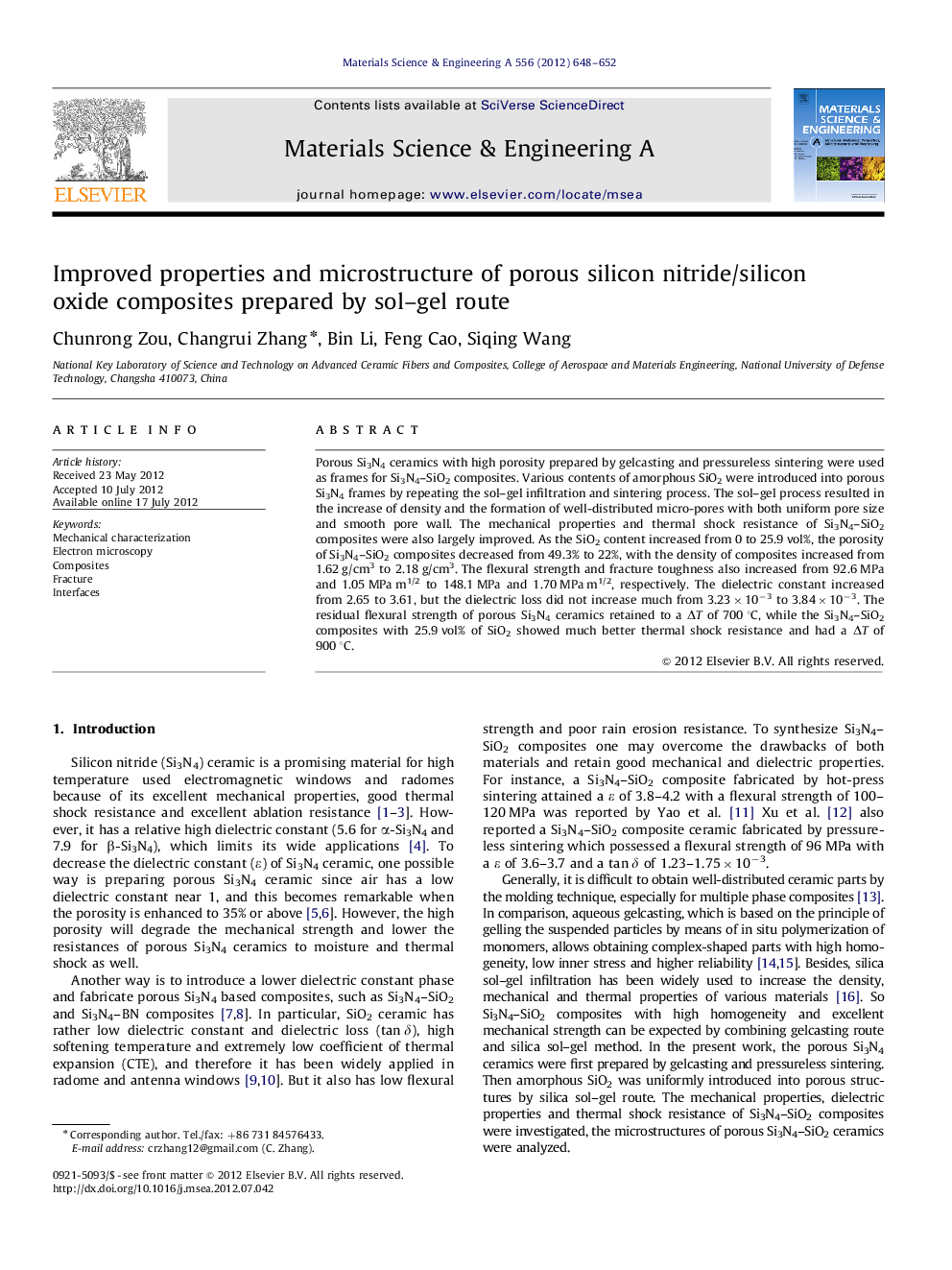| کد مقاله | کد نشریه | سال انتشار | مقاله انگلیسی | نسخه تمام متن |
|---|---|---|---|---|
| 1577104 | 1514787 | 2012 | 5 صفحه PDF | دانلود رایگان |

Porous Si3N4 ceramics with high porosity prepared by gelcasting and pressureless sintering were used as frames for Si3N4–SiO2 composites. Various contents of amorphous SiO2 were introduced into porous Si3N4 frames by repeating the sol–gel infiltration and sintering process. The sol–gel process resulted in the increase of density and the formation of well-distributed micro-pores with both uniform pore size and smooth pore wall. The mechanical properties and thermal shock resistance of Si3N4–SiO2 composites were also largely improved. As the SiO2 content increased from 0 to 25.9 vol%, the porosity of Si3N4–SiO2 composites decreased from 49.3% to 22%, with the density of composites increased from 1.62 g/cm3 to 2.18 g/cm3. The flexural strength and fracture toughness also increased from 92.6 MPa and 1.05 MPa m1/2 to 148.1 MPa and 1.70 MPa m1/2, respectively. The dielectric constant increased from 2.65 to 3.61, but the dielectric loss did not increase much from 3.23×10−3 to 3.84×10−3. The residual flexural strength of porous Si3N4 ceramics retained to a ΔT of 700 °C, while the Si3N4–SiO2 composites with 25.9 vol% of SiO2 showed much better thermal shock resistance and had a ΔT of 900 °C.
Journal: Materials Science and Engineering: A - Volume 556, 30 October 2012, Pages 648–652